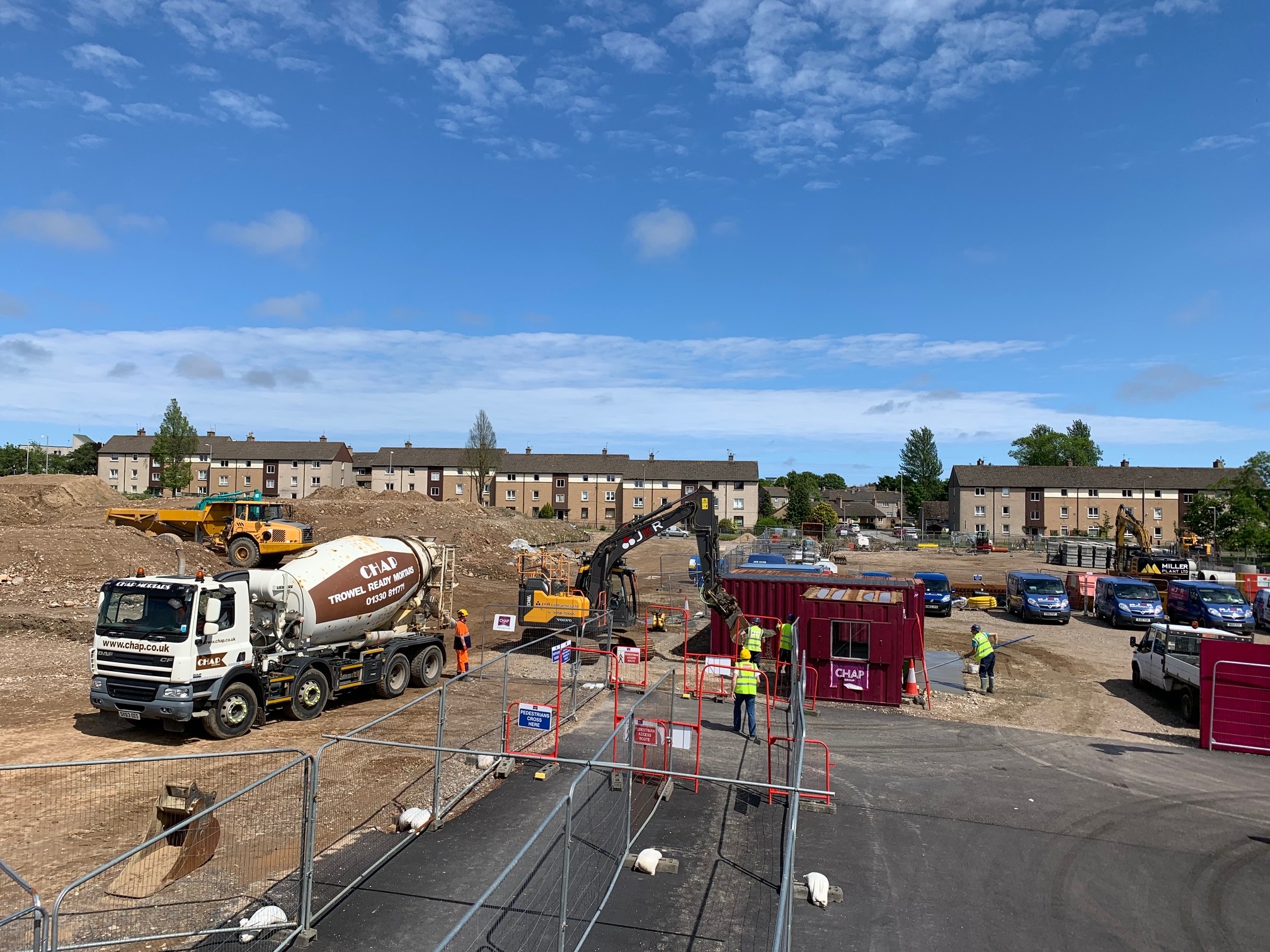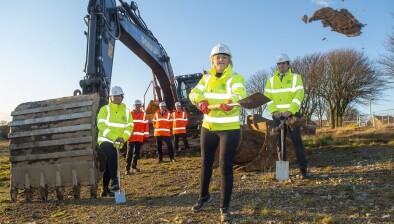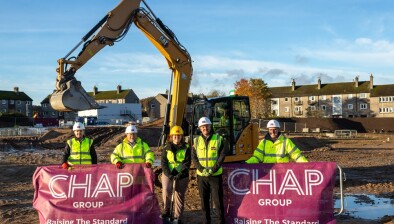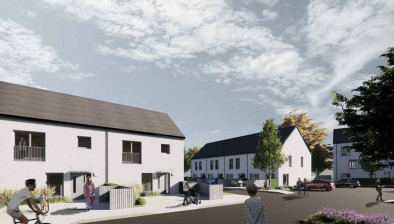Aberdeen resumes council house building programme
CHAP Group has recommenced work on Aberdeen City Council’s council house building programme.

The ambitious plans to build 2000 new council homes were progressing well until the coronavirus pandemic halted work at the Summerhill, where CHAP was the contractor, and Wellheads construction sites. Almost 200 new homes at Smithfield and Manor Walk had already been built as part of the overall programme.
However, after weeks of preparatory work, work resumed at Wellheads and Summerhill on the weeks commencing June 15 and 22 respectively.
Councillor Jenny Laing, council co-leader, said: “It’s good news that our contractors are able to resume work safely on our ambitious and innovative council home building programme which will provide much-needed local authority housing. Despite the impact of COVID-19, we remain determined to deliver on our commitment to build 2000 new and high-quality council homes across the city.”
A total of 369 housing units are earmarked for the site of the former Summerhill Academy and a further 283 homes at Wellheads Road in Dyce.
Councillor Douglas Lumsden, council co-leader, added: “COVID-19 has not dented our ambition to deliver top-quality homes for the people of Aberdeen. Indeed, the current situation has made the programme more important than ever, given the need to support the physical and mental wellbeing.
“We are making a considerable upfront investment in high-quality homes that will also pay dividends in the long-term by reducing maintenance costs to the Council in future.”
Project and programme consultancy Faithful+Gould has been appointed to help hit the target of 2,000 additional council homes across the city.
Aberdeen City Council plans to build more new homes at Tillydrone, Kincorth, Craighill and Greenferns which will adopt the building industry’s gold standard wherever practical and where site capacity allows.
The council’s city growth and resources committee agreed in February to adopt the standard’s design specifications which aim for a minimum 27% reduction in carbon dioxide emissions compared to Silver, partly through using renewable energy to provide 50% rather than 5% of hot water demand.
Wherever possible energy efficient technologies will be included that make homes greener and cheaper to run; enhanced sound insulation; increased natural light; improved security; dedicated space for working or study; and storage for an electric wheelchair, pram or bicycle.








